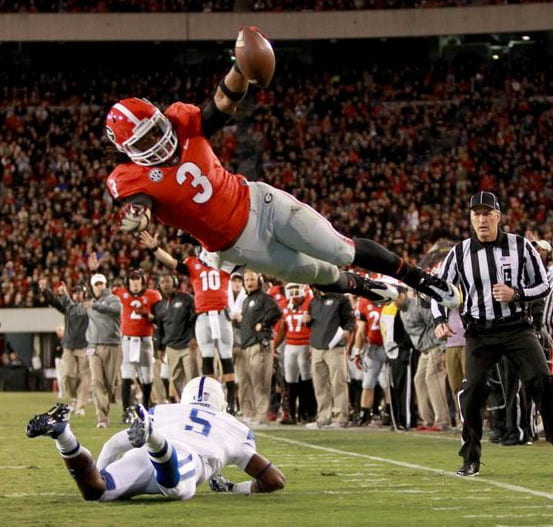By MATT COX – SPORTS SECTION EDITOR
Think about your favorite college athlete, if you wished to have a jersey with that player’s number on the front, how difficult would it be to find one?
For example, say you are a Georgia Bulldogs fan and you wish to purchase a jersey featuring Heisman frontrunner Todd Gurley’s recognizable number three. By simply typing his name and the word “apparel” into an Internet search engine, thousands of sites appear.
The legal discussion between the NCAA, universities, and private parites regarding revenue made from player likeness has been increasingly publicized recently. With Gurley’s suspension for signing autographs for money, the subject has been thrust into the spotlight.

While the NCAA typically hands down a punishment that is either extremely unfair or ridicuously trivial, they have not been consistent with this matter in the past.
In fact, 2013 future first round draft pick Johnny Manziel was suspended for only the first half of a contest when the NCAA overheard that he was also signing autographs for profit.
However, Manziel’s case no wrongdoing was found to exist. Texas A&M University and the NCAA reached an agreement to avoid an investigation.
In 2010, Ohio State University quarterback Terrelle Pryor, along with four other teammates, were suspsended for the first five games of the season for accepting improper benefits from a local business. They allegedly received discounted prices from a tattoo parlor in Columbus simply because they were high profile athletes, there were also rumors that they had sold memorabilia given to them by the university.
These are just three examples from recent years, if a deeper search were conducted, numerous other cases that resemeble these could be found easily.
Many administrators and advocates of player’s rights don’t have an issue with the NCAA handing out penalities for breaking the rules, but they do have a problem with the NCAA making millions of dollars doing essentially the same thing these athletes are doing.
Some organizations are taking the steps necessary to reimburse the athletes for the money that the NCAA and other groups have extorted from them while they were in college.
For example, Electronic Arts (EA) Inc. and Collegiate Licensing Co. reached an agreement in July 2013 that would affect more than 125,000 current and former college football and basketball players who have previously appeared in an EA Sports video game.
The settlement allows for the former players to be compensated for the company making a profit while using their likeness without their permission; this is a much needed first step in the reconciliation process. In addition to the payment to former players, EA Sports will no longer manufacture games featuring college athletes.
A productive next step would be for the NCAA to abolish the protocol by which incoming players sign an agreement allowing the NCAA to profit from using their likeness while they are in school.
Therefore what the NCAA is doing is not technically illegal, but many would argue that it is immoral and at the expense of the athletes. Judging by how they have handled these situations in the past though, don’t expect them to produce an olive branch any time soon.
